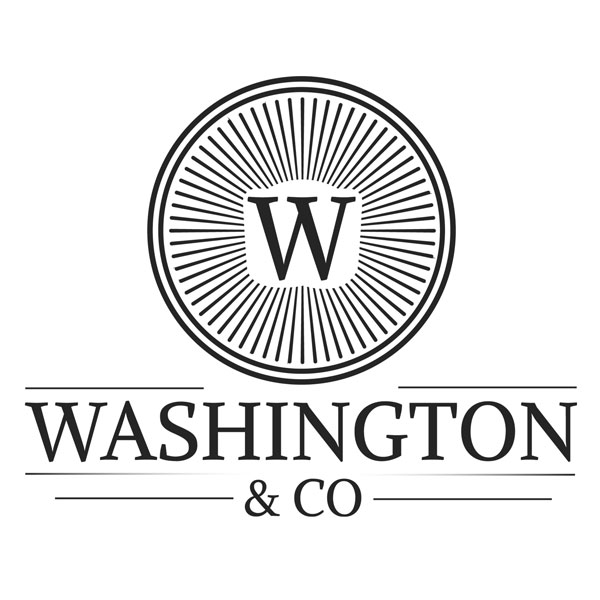If your business is generating consistent six or seven figures, your next biggest challenge probably isn’t earning — it’s keeping.
Keeping more after tax.
Keeping it growing.
And keeping it structured in a way that builds personal wealth outside your business.
At Washington & Co. Inc — Strategic Tax & Advisory, we help high-income founders build strategies that diversify wealth beyond the business without triggering unnecessary taxes or putting cash into slow or illiquid vehicles.
This guide covers how to grow your post-tax portfolio — using strategies that keep your CPA happy and your net worth climbing.
Why Entrepreneurs Must Diversify Their Wealth
Many founders hit $500K, $1M, or even $3M in revenue… and still have nearly all of their wealth tied up in one thing:
Their business.
While reinvestment is critical in growth years, overconcentration creates risk — especially when:
- You’re thinking about retirement or selling
- You want liquidity for family, real estate, or investing
- You’re entering a higher tax bracket and want more long-term planning options
Your business is the engine.
But your personal wealth needs other assets to ride alongside it.
Strategy 1: Real Estate for Cash Flow + Tax Efficiency
Commercial or residential real estate offers:
- Cash flow through rental income
- Depreciation deductions to offset that income
- Potential for equity growth and 1031 exchanges
- Tax-deferred compounding via cost segregation or accelerated depreciation
If structured properly (LLC or holding company), it also provides asset protection and additional expense layering (such as auto, travel, or office write-offs).
Founders we work with often buy:
- Short-term rentals (Airbnb) for higher cash yield
- Office or warehouse space used by their business
- Long-term single-family rentals in appreciating markets
- Small commercial or mixed-use for portfolio diversity
Tip: If you’re already paying rent to someone else, owning the property through a separate LLC can give you rent deductions on one side, and real estate wealth on the other.
Strategy 2: Roth Conversions and Mega Backdoor Roths
If your income is too high to contribute to a Roth IRA directly, consider these alternatives:
- Backdoor Roth IRA – Contribute to a traditional IRA, then convert to Roth
- Mega Backdoor Roth 401(k) – If your 401(k) allows after-tax contributions, you can contribute up to the full plan limit ($69,000 in 2025) and convert a portion to Roth
Why Roth?
- Tax-free growth
- Tax-free withdrawals
- No required minimum distributions
- Better legacy planning flexibility
We often recommend Roth-heavy strategies when:
- Your current tax bracket is lower than you expect in retirement
- You want to pre-pay tax and hedge against future rate increases
- You’re building wealth you don’t need access to right away
Strategy 3: Tax-Efficient Brokerage & Capital Gains Planning
Don’t want your cash sitting in a bank account? A taxable brokerage account offers:
- Flexibility to invest in ETFs, stocks, or diversified funds
- Capital gains treatment (lower rates than ordinary income)
- Access to tax-loss harvesting in down markets
- No contribution limits
With the right advisor, you can:
- Harvest losses to offset gains
- Build custom portfolios around qualified dividends
- Layer in municipal bonds for tax-free income
- Avoid triggering short-term capital gains
This strategy is ideal for founders who:
- Are maxing out retirement and HSA contributions
- Want liquidity for opportunities (real estate, lending, angel investing)
- Don’t want funds locked away until age 59½
Strategy 4: Holding Companies + Asset Stacking
Once your business hits consistent profit levels, a multi-entity structure lets you stack income streams, isolate risk, and optimize wealth-building.
Structure example:
- Operating Company – Your core business, typically an S Corp or LLC
- Holding Company – Holds real estate, trademarks, or investments
- Investment Arm – For real estate, private lending, or cash flow assets
- Management Company – Provides admin, marketing, or strategy services
Benefits:
- Moves income to more favorable tax environments
- Reduces liability across business lines
- Allows compensation and benefit customization
- Creates a future-ready structure for exit, inheritance, or sale
If you’re building multiple lines of income, this lets you treat your empire like a portfolio — not just a job.
Real Example: $9.2M Net Worth Plan with Outside Holdings
We worked with a founder who had:
- A business doing $2.1M/year
- $400K in W-2 income
- All cash tied up in operations
Here’s what we implemented over two years:
- Moved real estate into a separate LLC
- Built a brokerage and cash balance plan for outside wealth
- Created a holding company for future brand licensing
- Structured income across 3 entities
- Initiated a mega backdoor Roth and life insurance planning
Now, 38% of their net worth sits outside the business, growing passively — and protected from operational risk.
What You Can Do Now
- Identify how much of your current wealth sits in your business
- Start with your next $100K: where should it go, outside the company?
- Max out retirement + Roth options
- Open a brokerage for passive diversification
- Consider real estate as both a business and personal wealth play
- Talk to your advisor about holding company structure and entity layering
Book a Personal Wealth Strategy Call
We specialize in helping seven-figure entrepreneurs shift from income-earner to wealth builder — using smart, tax-efficient structures that work both inside and outside the business.
Book your Personal Wealth Strategy Session with Washington & Co. Inc — Strategic Tax & Advisory.
